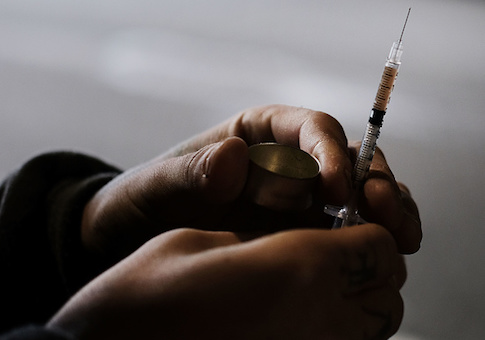A panel discussion at the American Enterprise Institute Tuesday explored the social dimensions of America's opioid crisis, with a keynote by Sen. Mike Lee (R., Utah) and comments by the panelists arguing that solutions to the epidemic must begin locally and with an eye towards supporting better social cohesion.
"When faced with a crisis of this magnitude, it is easy to say that the solution is a raft of new government programs. I don't offer any easy solutions like that today. This is too complex and intractable an issue for knee-jerk responses," Lee cautioned in his opening remarks.
Lee's comments were informed in part by research conducted by the Social Capital Project (SCP), which Lee oversees in his capacity as Chairman of the Joint Economic Committee. The project is dedicated to documenting the state of social capital in America, measuring how healthy relationships and communities are, with an eye towards the social pathologies that can emerge in communities blighted by scourges like the opioid epidemic.
Last October, the SCP released a report analyzing the socioeconomic factors driving the opioid crisis, arguing that lack of access to social capital may help explain those populations disproportionately struck by opioid addiction. The report showed that level of education and marriage status were strong predictors of addiction, and notes how in certain communities, opioids have become a kind of parallel currency, substituting social trust and capital for the exchange of OxyContin pills.
Lee emphasized that while the 42,000 annual opioid overdose deaths are most prominent in the public consciousness, the people around addicts also suffer the specifically social effects of drug addiction.
"While we focus on the deaths, we should not forget the toll that addiction takes in other forms," Lee said. "Across the country, foster care systems are overwhelmed by refugees from opioid-addicted households. Babies are born dependent on drugs that may one day claim their parents. Countless others spend sleepless nights praying they will get back the husband, wife, son, or daughter they've lost to opioids."
"These examples show that, far from being a 'victimless crime,' drug abuse has countless victims—it corrodes users, households, and communities alike," Lee said.
Lee concluded his speech with few concrete policy recommendations, opting instead to suggest two "rules of thumb": that government should acknowledge "culture matters," and that it should seek to "do no harm," as, Lee contended, it has done in the opioid epidemic with Medicaid expansion. The senator left ideas for how government can help to panelists Yuval Levin, vice president at the Ethics and Public Policy Center, and Dr. Sally Satel, a practicing psychiatrist and AEI fellow.
Levin's approach echoed Lee's emphasis on the importance of fostering local community and not over-expanding solutions. Levin noted reforms at the FDA and in prescription policies that have reduced the supply of prescribed opioids (although prescription opioids do not generally cause the deaths of those to whom they have been prescribed). He noted that generally there is room to invest more in treatment policy that seems to be effective, and emphasized the need for more government effort to fight the importation of fentanyl, which a recent Senate report found was being transported into the country illegally by Chinese traffickers.
But in general, Levin cautioned that because the opioid epidemic has a social dimension, we should not imagine that a one-size-fits-all policy will work.
"Often the solutions that work at the local level are just going to work at the local level," he said.
Dr. Satel, for her part, focused on methods of harm prevention. Noting that the distribution of money for treatment infrastructure is "highly uneven across the country," Satel explained how more could be done with medical treatments for addiction. Drugs such as methadone, buprenorphine, and vivitrol can help a patient detox successfully, mitigating side effects or reducing cravings, even allowing patients to transition to long-term "methadone maintenance" so as to be able to lead functioning lives.
Satel emphasized that medication is only one component of recovering from opioid addiction. Overcoming that requires a commitment to reconnecting with the people whom pills may lead us to isolate ourselves from.
"A person has to be motivated to stick with it, and [medication is] not enough clearly. Once someone's stabilized, there's a whole repair process that kicks in. Starting to rebuild those bridges with school, and family, and work. This is what rehab is called," Satel said.
